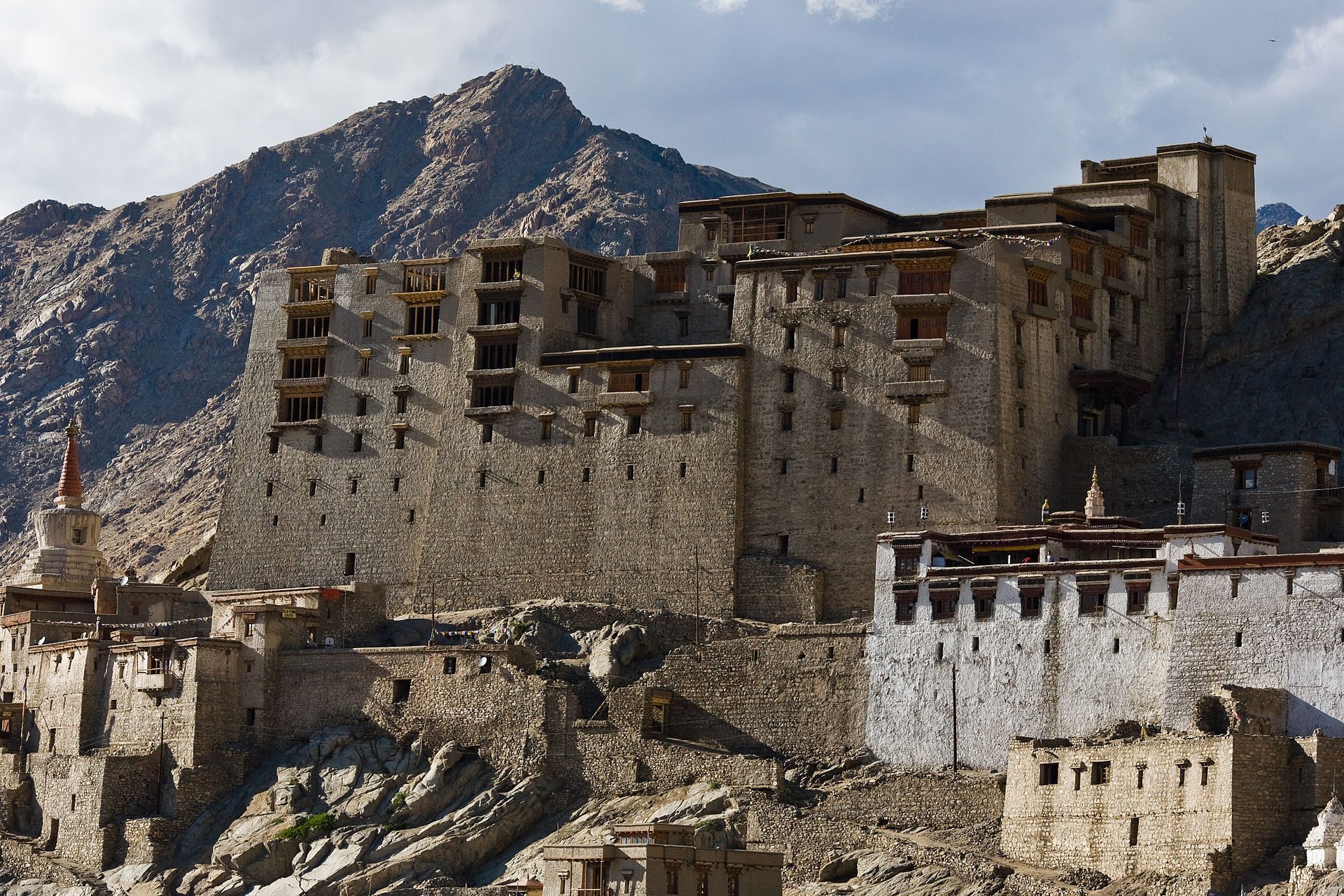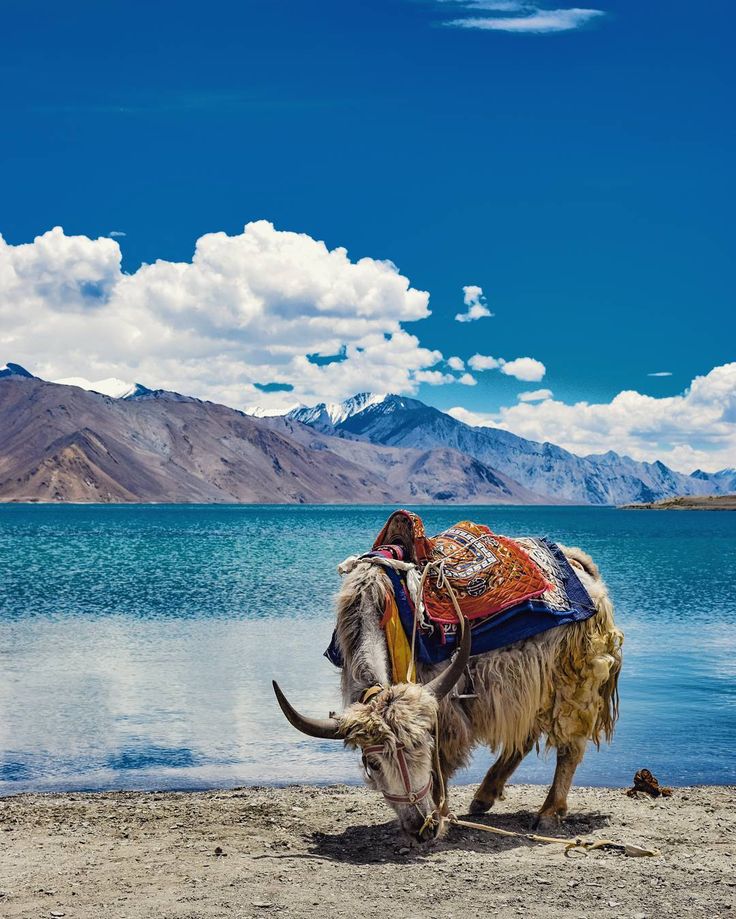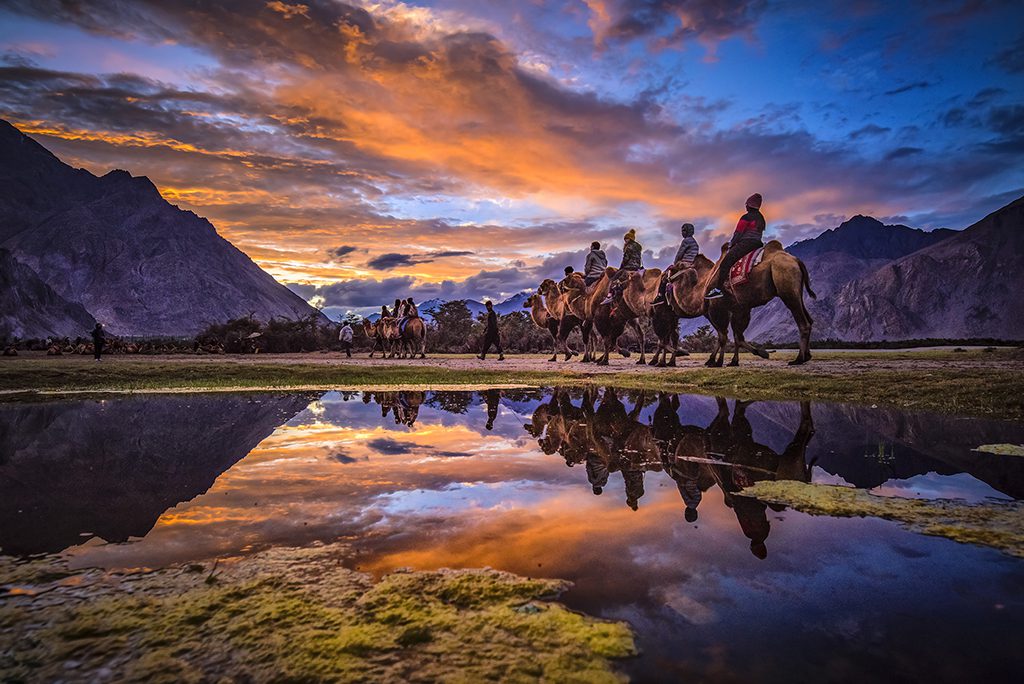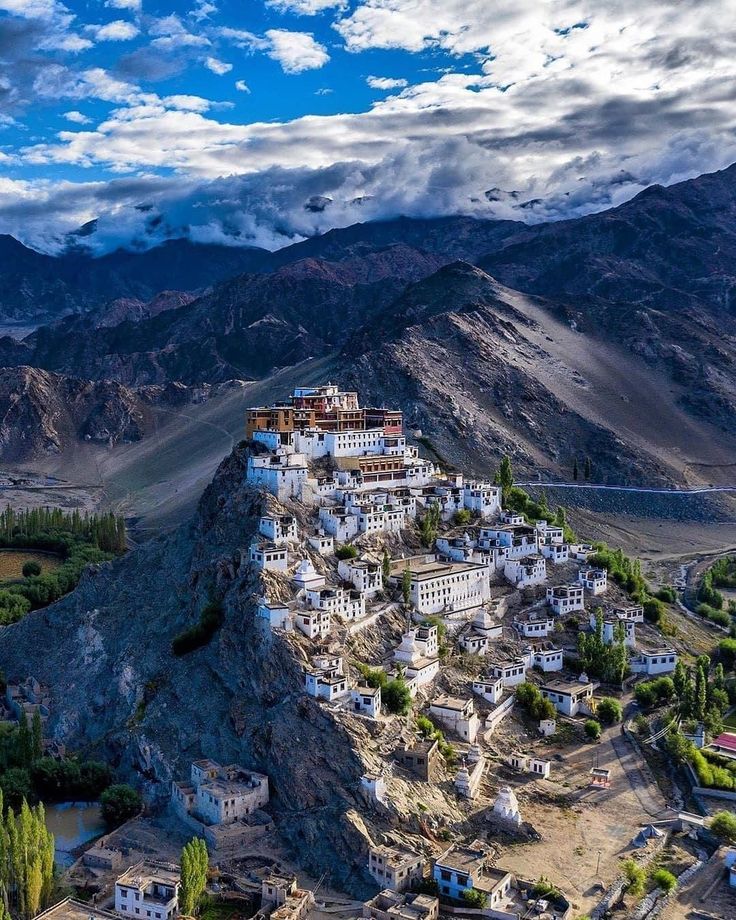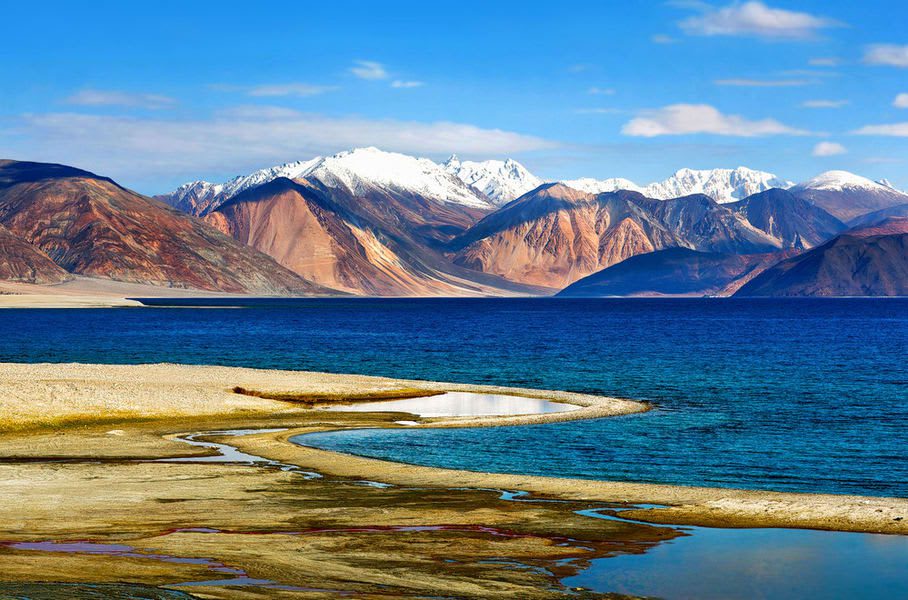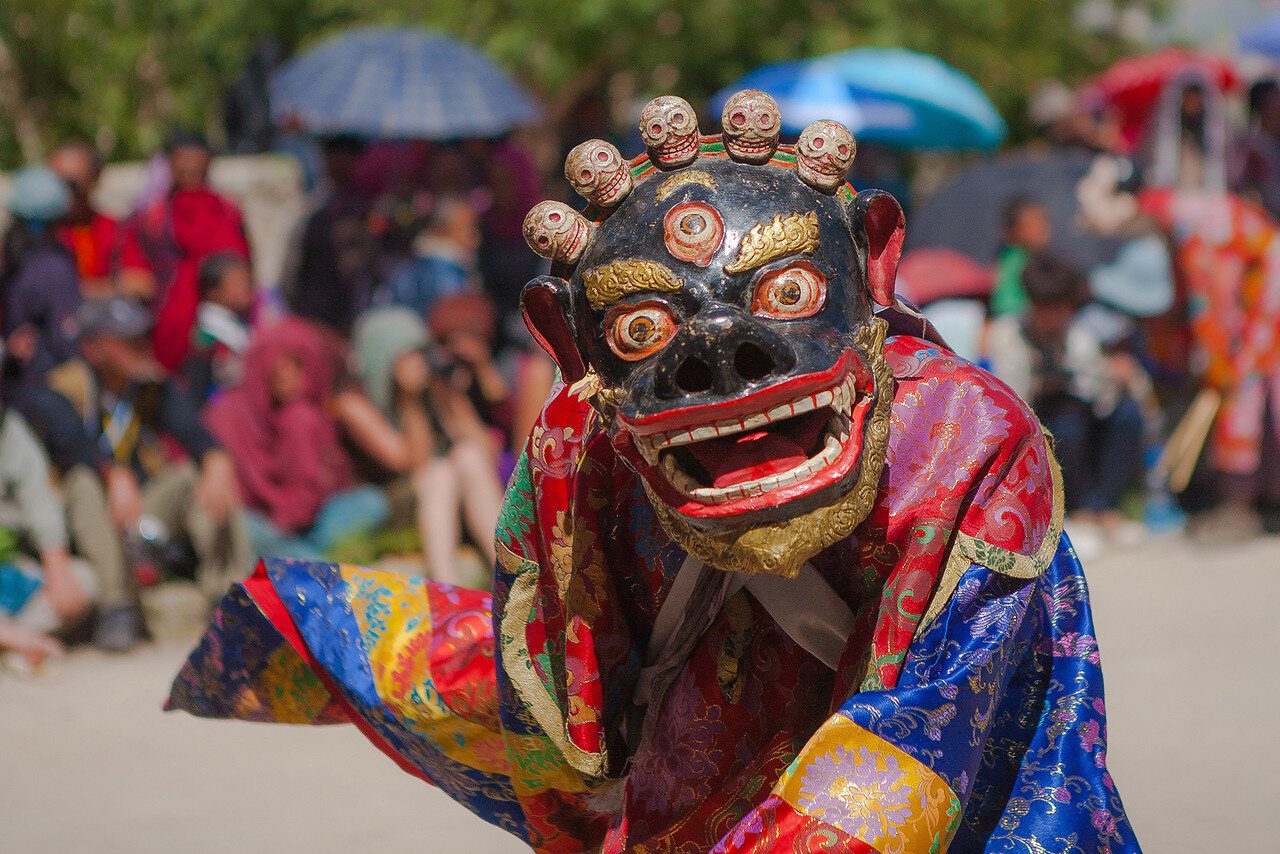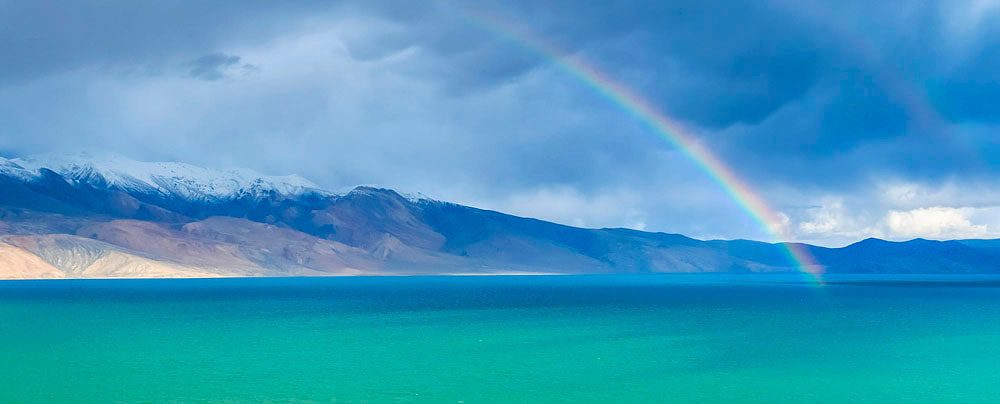Ladakh, often called the “Land of High Passes,” offers a surreal landscape, a unique culture, and countless adventures. Located in the northernmost part of India, Ladakh is a destination for those seeking natural beauty, spirituality, and outdoor thrills. From its ancient monasteries to its crystal-clear lakes, Ladakh presents an unmissable experience for travelers worldwide. This comprehensive guide highlights the top 10 must-do experiences in Ladakh, each one bound to make your trip unforgettable.
Essential Travel Information for Ladakh
How to Reach Ladakh
There are two primary ways to reach Ladakh: by road and by air.
By Air: The easiest way to reach Ladakh is by flying into Leh’s Kushok Bakula Rimpochee Airport. Leh has connections from major cities like Delhi and Mumbai, making air travel a convenient option.
By Road: Adventurous travelers can take the road from Manali or Srinagar. The Leh-Manali Highway and Srinagar-Leh Highway are popular among bikers and road trip enthusiasts. Both routes offer breathtaking views of the Himalayas and high-altitude passes.

“The road trip from Manali to Leh was the adventure of a lifetime! I’ve driven all around Europe, but nothing compares to the thrill of Ladakh’s winding mountain roads.”
— Samantha Blake, Photographer, United Kingdom
Best Time to Visit Ladakh for Adventure and Sightseeing
The best time to visit Ladakh depends on what you wish to experience.
Summer (May to September): Most travelers visit Ladakh during the summer when roads and mountain passes are open, and temperatures are warmer. This season is perfect for biking, sightseeing, and trekking.
Winter (December to February): Known for its extreme conditions, winter in Ladakh is ideal for the adventurous at heart. This season allows you to experience the famous Chadar Trek on the frozen Zanskar River.
“We visited Ladakh in July and were stunned by the beauty of Pangong Lake. The lake’s color changed throughout the day—it was like watching nature’s artwork!”
— Lucas Fernández, Engineer, Spain
Unmissable Experiences in Ladakh
1. Exploring Pangong Lake: A Jewel of the Himalayas

Pangong Lake, located at an altitude of 4,350 meters, is one of Ladakh’s most picturesque destinations. This saltwater lake spans over 134 kilometers, stretching from India into Tibet. Known for its mesmerizing blue hues that change with the sun’s position, Pangong Lake is a must-visit for photographers and nature lovers.
Best Times to Visit: May to September
Activities:
- Photography: Capture the lake’s vibrant colors.
- Camping: Several camping sites around Pangong allow you to spend a night under the stars.
- Birdwatching: Spot rare migratory birds like Brahminy ducks.
“Waking up to the sunrise over Pangong Lake felt like a dream. I’ve visited lakes in Canada, but Pangong’s beauty is unmatched.”
— Aiden Cooper, Software Developer, Canada
2. Nubra Valley and the Sand Dunes of Hunder
Nubra Valley, known for its surreal landscapes, lies to the north of Leh and is accessible via the Khardung La Pass, one of the world’s highest motorable roads. The valley is famous for its Hunder sand dunes and Bactrian camel rides.

Best Times to Visit: May to October
Highlights:
- Camel Rides: Take a ride on a Bactrian camel through Hunder’s white sand dunes, a unique experience.
- Local Villages: Discover the culture of Diskit and Sumur villages, known for their charming homes and gardens.
- Diskit Monastery: Visit the iconic 32-meter-tall statue of Maitreya Buddha at Diskit Monastery.
“Riding camels on sand dunes in the middle of the Himalayas? It’s hard to believe until you see it for yourself. Nubra Valley was the highlight of my Ladakh trip!”
— James Larkin, Travel Blogger, United States
3. Visiting Ladakh’s Ancient Monasteries
Ladakh is steeped in Buddhist heritage, with monasteries dotting its mountainous landscape. Key sites include Hemis Monastery, Thiksey Monastery, and Diskit Monastery.

Best Times to Visit: Year-round
Must-Visit Monasteries:
- Hemis Monastery: Ladakh’s largest monastery, known for the annual Hemis Festival.
- Thiksey Monastery: Often compared to Tibet’s Potala Palace, this monastery has a stunning 15-meter Buddha statue.
- Diskit Monastery: Famous for its Maitreya Buddha statue overlooking Nubra Valley.
“Thiksey Monastery felt like a journey back in time. The chanting monks and tranquil surroundings made for a deeply spiritual experience.”
— Priya Rajan, Journalist, India
4. Biking Through the High Passes, Including Khardung La
For thrill-seekers, biking through Ladakh’s high mountain passes is an unforgettable experience. The Khardung La Pass, at 5,359 meters, is one of the highest motorable roads globally and a must-ride for bikers.
Best Times to Visit: June to September
Popular Routes:
- Leh to Khardung La: A 40 km journey through rugged terrain.
- Leh-Manali Highway: Known for its scenic views and challenging conditions.
“Biking through Khardung La was the ultimate test of endurance. The road is tough, but the views are more than worth it.”
— Jack O’Neil, Adventure Guide, Ireland
5. River Rafting on the Zanskar River
For a refreshing adventure, try river rafting on the Zanskar River. This icy river cuts through stunning gorges, making it ideal for thrilling rapids.

Best Times to Visit: July to September
River Rafting Highlights:
- Rafting Grades: The Zanskar offers Class III and IV rapids.
- Scenic Views: Enjoy views of snow-capped mountains and rock formations.
“I’ve rafted in Costa Rica and New Zealand, but the Zanskar River was on another level. The icy water and dramatic landscapes were unbeatable.”
— Emma Johansson, Nurse, Sweden
6. Experiencing the Mystical Magnetic Hill
Near Leh, Magnetic Hill is a must-visit. Here, cars appear to roll uphill due to an optical illusion, which has mystified visitors for years.
Best Times to Visit: Year-round
What to Do:
- Test the Phenomenon: Park your vehicle in neutral and see the “magnetic” effect.
- Nearby Attractions: The Hall of Fame Museum and Gurudwara Pathar Sahib are nearby.
“The Magnetic Hill was bizarre! Watching our car ‘roll uphill’ was something I didn’t believe until I saw it myself.”
— Sophia Wright, Marketing Manager, Australia
7. Wildlife Watching and Snow Leopard Spotting in Ladakh
Ladakh’s unique wildlife includes rare species like the snow leopard. Hemis National Park is the prime location for spotting these elusive animals.

Best Times to Visit: Winter months (January to March) for snow leopard sightings
Wildlife to Look Out For:
- Snow Leopards: Known as “The Ghost of the Himalayas.”
- Blue Sheep and Tibetan Wolf: Other rare animals found in Ladakh.
“Catching a glimpse of a snow leopard was magical! I traveled all the way from Italy for this, and it was worth every effort.”
— Marco Romano, Wildlife Photographer, Italy
8. The Frozen Wonder of the Chadar Trek
One of the most challenging treks in India, the Chadar Trek takes place on the frozen Zanskar River in winter. This trek is ideal for seasoned adventurers.

Best Times to Visit: January to February
Trek Highlights:
- Unique Terrain: Walk on sheets of ice in temperatures as low as -30°C.
- Scenic Campsites: Stay overnight in caves and along the riverbank.
“The Chadar Trek tested my limits but was a once-in-a-lifetime experience. There’s nothing like walking on a frozen river.”
— Ella Schmidt, Fitness Coach, Germany
9. Camping by Tso Moriri Lake
Tso Moriri Lake, situated at 4,595 meters, offers a peaceful escape for those looking to camp in a pristine setting.

Best Times to Visit: May to September
Camping Highlights:
- Remote Serenity: Ideal for a quiet retreat with no cellphone reception.
- Stunning Scenery: Enjoy views of surrounding mountains and clear night skies for stargazing.
“Camping by Tso Moriri was the highlight of my trip. The night sky was the clearest I’ve ever seen, with a blanket of stars.”
— Leo Martinez, School Teacher, Argentina
10. Attending Ladakh’s Unique Festivals
Ladakh’s festivals, like the Hemis Festival and Losar, allow visitors to experience the region’s vibrant culture and traditions.

Best Times to Visit:
- Hemis Festival: June/July
- Losar (New Year): December
Festival Highlights:
- Mask Dances: Performances by monks wearing colorful masks.
- Local Food and Craft Stalls: Taste traditional food and buy local crafts.
“The Hemis Festival was a beautiful display of Ladakhi culture. The music, dance, and food were so immersive.”
— Anya Ivanov, Artist, Russia
Practical Travel Tips for a Ladakh Adventure
| Item |
Why It’s Needed |
| Warm Clothing |
Temperatures drop drastically at night. |
| Sunscreen and Sunglasses |
High-altitude sun exposure is intense. |
| Water Bottle |
Stay hydrated to avoid altitude sickness. |
| Portable Charger |
Power banks are essential for remote areas. |
| First-Aid Kit |
Carry essentials for minor injuries. |
Q&A Section
Q: What is the best time to visit Ladakh?
A: The best time to visit is during summer (May to September) for pleasant weather and open roads, or winter (January to February) for winter treks like the Chadar Trek.
Q: How many days are recommended for a Ladakh trip?
A: Ideally, 7-10 days for an immersive experience covering key attractions and acclimatization time.
Q: Do you need permits to visit certain areas in Ladakh?
A: Yes, permits are needed for areas like Nubra Valley, Pangong Lake, and Tso Moriri.
Q: Is it safe to travel to Ladakh alone?
A: Yes, Ladakh is generally safe for solo travelers. Be sure to acclimate properly and follow local guidelines.
Q: How can I handle altitude sickness in Ladakh?
A: Stay hydrated, ascend gradually, and take regular breaks. Medication for altitude sickness can also help.
Q: What foods should I try in Ladakh?
A: Must-try foods include thukpa (noodle soup), momos (dumplings), and butter tea.
Top Experiences in Ladakh
Top Experiences in Ladakh | The journey through Ladakh mirrors the very essence of unraveling unknown horizons, as its dramatic landscapes and unique cultural identity awaken the deepest sense of wonder and exploration. Top Experiences in Ladakh delves into this realm where inner peace intertwines with the wild, untouched beauty of Ladakh. From the snow-capped peaks to the serene monasteries, every step in Ladakh is a step toward self-discovery. The mountains, ancient paths, and unspoken mysteries stretch before travelers, offering a meditative experience where each encounter feels both effortless and transformative. Whether it’s trekking across remote valleys or sitting quietly beside a sacred lake, Ladakh invites those who seek a deeper connection to the natural and spiritual world.

Top Experiences in Ladakh
The monasteries of Ladakh stand as living monuments to the region’s profound spiritual heritage. With origins dating back over a thousand years, these ancient structures are both places of worship and repositories of art, culture, and wisdom. Hemis Monastery, one of the largest in Ladakh, is renowned for its annual festival, featuring colorful mask dances performed by monks. The history of these monasteries reflects Ladakh’s role as a crossroads between India, Tibet, and Central Asia, where religious and cultural influences have intertwined over the centuries.
The Tibetan Buddhist influence is especially evident in the architecture and daily life of the monks. Prayer wheels, intricate murals, and the soft hum of chants fill the air as visitors explore the monastery grounds. Each monastery, from the remote Lamayuru to the awe-inspiring Thiksey, offers a window into the spiritual heart of Ladakh. These centers of meditation, learning, and community life continue to thrive, preserving traditions that have shaped Ladakh for generations.
Why Visit Ladakh for Top Experiences in Ladakh?
Ladakh is a destination that transcends mere travel. It offers a journey that touches both the outer and inner landscapes, making it a perfect setting for those who seek to unravel their own unknown horizons. The region’s breathtaking scenery—from towering mountain ranges to hidden valleys—provides not just an escape but a space for contemplation and growth. Ladakh’s culture, deeply rooted in Buddhist practices, invites visitors to reflect on their own lives and the world around them.
Ladakh’s people, known for their warmth and hospitality, add to the richness of the experience. Villages like Sumda Chun and the legendary Nubra Valley introduce travelers to a way of life that is intricately connected to nature and spirituality. Staying in local homestays allows for immersive experiences where one can learn about traditional Ladakhi customs, share meals made from local produce, and participate in community rituals.

Beyond its natural beauty, Ladakh offers a unique opportunity to explore oneself. The vastness of the region’s plateaus and the clarity of its skies seem to mirror the vastness of the human spirit. Whether it’s standing atop a mountain pass at 18,000 feet or meditating in a centuries-old monastery, Ladakh helps unravel the unknown horizons within each traveler.
Finding the Best Top Experiences in Ladakh in Ladakh
Finding the best places in Ladakh to experience “Top Experiences in Ladakh” involves venturing off the beaten path. Ladakh’s lesser-known treks, such as those leading to secluded monasteries or high-altitude lakes, offer unparalleled opportunities for solitude and reflection. The Markha Valley trek, for instance, takes travelers through verdant valleys, ancient villages, and high-altitude passes, allowing for both physical and spiritual exploration.
Ladakh’s iconic lakes, including Pangong Tso and Tso Moriri, are ideal spots for quiet contemplation. Their still waters reflect the sky, creating a mesmerizing landscape that feels timeless and infinite. Sitting beside these lakes, especially at dawn or dusk, brings an overwhelming sense of peace and connection with nature.

For those interested in Ladakh’s spiritual heritage, exploring monasteries such as Alchi, Phyang, or Diskit can be a transformative experience. These sites are not just places of worship but also centers of art, philosophy, and wisdom. Visiting these monasteries, with their ancient murals and intricate statues, offers insight into Ladakh’s rich cultural tapestry.
Ladakh’s Atmosphere and Top Experiences in Ladakh
Ladakh’s atmosphere is unlike any other place on Earth. The stark contrasts between the rugged mountains and the serene, tranquil monasteries create an environment that feels both raw and sacred. The traditional decor in Ladakhi homes and religious sites reflects this balance, with mud-brick houses adorned with prayer flags and colorful thangkas (Buddhist paintings) that add warmth and spiritual meaning to the space.

The interiors of Ladakhi homes, often simple and functional, are filled with symbols of devotion. Small shrines dedicated to Buddhist deities are common, and the air is often fragrant with incense. The use of earthy materials, like stone and wood, along with brightly colored textiles, creates an inviting and peaceful space, perfect for relaxation and reflection.
Traditional Ladakhi Cuisine
Traditional Ladakhi cuisine is an integral part of the region’s identity, offering a unique blend of flavors that reflect its harsh climate and remote location. Hearty, warming dishes such as thukpa (noodle soup) and momos (dumplings) provide the sustenance needed to endure Ladakh’s cold temperatures. Skyu, a thick stew made with root vegetables and barley, is another staple of the Ladakhi diet, designed to nourish both body and spirit.

Drinks like butter tea, made with yak butter and salt, are a must-try for anyone visiting Ladakh. This rich, savory drink is not only warming but also hydrating, making it essential for those venturing into the high-altitude regions of Ladakh. Chang, a local barley beer, is often enjoyed during festivals and community gatherings, adding a sense of joy and camaraderie to any occasion.
Live Cultural Top Experiences in Ladakh in Ladakh
Ladakh is home to a vibrant cultural scene, with festivals and live performances held throughout the year. The Hemis Festival, which celebrates the birth of Guru Padmasambhava, is one of the largest and most famous events in the region. Monks dressed in elaborate costumes perform cham dances, which depict the triumph of good over evil. The energy of the festival, with its bright colors, rhythmic music, and elaborate rituals, draws visitors from around the world.
Other local festivals, such as the Losar (New Year) and Ladakh Festival, provide visitors with the chance to witness traditional dance, music, and crafts that have been passed down through generations. These events are more than just entertainment; they are a celebration of Ladakh’s rich cultural heritage and its deep connection to the spiritual world.
Trekking and Outdoor Activities Top Experiences in Ladakh
Ladakh is a trekker’s paradise, offering some of the most stunning and challenging routes in the world. From the famous Top Experiences in Ladakh, which follows the frozen Zanskar River, to lesser-known routes like the Sham Valley or Nubra Valley treks, Ladakh’s landscape offers endless possibilities for adventure and discovery. The high-altitude passes, such as Khardung La and Chang La, offer breathtaking views of snow-capped peaks and sprawling valleys.

Wildlife enthusiasts will also find Top Experiences in Ladakh to be a haven for rare species such as the snow leopard, Himalayan blue sheep, and the Tibetan wild ass. Winter expeditions to spot the elusive snow leopard in the Hemis National Park are gaining popularity among wildlife photographers and conservationists alike.
The Importance of Preserving Ladakh’s Top Experiences in Ladakh
Ladakh’s rich cultural and environmental Top Experiences in Ladakh is under increasing threat from climate change and mass tourism. Preserving this unique region requires careful attention to sustainable tourism practices. Choosing eco-friendly accommodations, supporting local businesses, and participating in community-led conservation efforts are just a few ways that visitors can contribute to the preservation of Ladakh’s natural and cultural heritage.
Ladakh’s people have a long history of living in harmony with their environment, practicing sustainable agriculture, and maintaining a deep spiritual connection to the land. Visitors are encouraged to follow the same principles, leaving no trace and respecting the fragile ecosystems that make Ladakh so special.
Etiquette and Tips for Visiting Top Experiences in Ladakh
Before visiting Ladakh, it’s essential to understand and respect the region’s customs and traditions. As a deeply spiritual place, Ladakh requires visitors to dress modestly, especially when visiting monasteries or attending religious ceremonies. Always ask for permission before taking photographs inside monasteries or of local people.
Medical Top Experiences in Ladakh
Spa trail Top Experiences in Ladakh
Top Experiences in Ladakh

When Top Experiences in Ladakh, remember to stay on designated paths to avoid damaging fragile ecosystems. Tipping is appreciated but not expected in most settings, and it’s important to carry cash, as many remote areas do not accept credit cards. Lastly, be mindful of altitude sickness and take the necessary precautions when traveling to higher elevations.
Conclusion: Enjoying Top Experiences in Ladakh in Ladakh
Ladakh is a place where the physical and spiritual worlds converge, offering travelers a journey unlike any other. Whether you’re trekking across high-altitude deserts, exploring ancient monasteries, or simply sitting in quiet reflection by a mountain lake, Ladakh invites you to unravel your own unknown horizons. By respecting the region’s traditions and practicing sustainable tourism, you help ensure that Ladakh’s beauty and cultural richness will be preserved for future generations to explore and enjoy.
